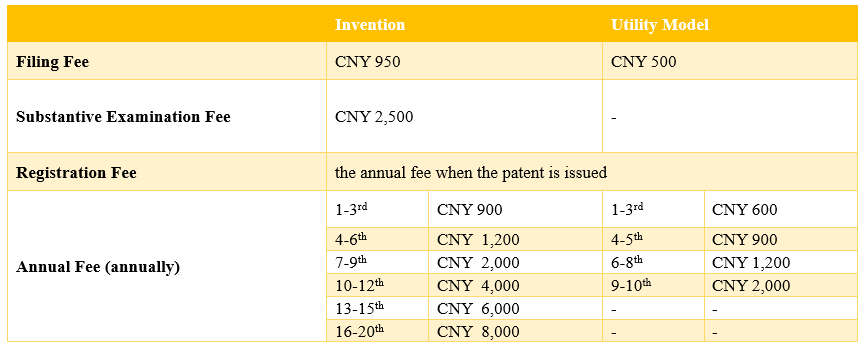Utility Model Patents VS Invention Patents in China

What are Utility Model Patent Patents in China?
The UMP in China is an independent patent type different from invention patents in China. However, in some countries (like the US), the UMP is not a separate type, but is protected under the category of invention.
Experienced applicants know that UMPs are typically easier to obtain in China than elsewhere and can be granted for a broader variety of inventions. If applied correctly, a UMP can be a significant IP right either standing alone, or complementing a corresponding invention patent in China.
What are the differences between them?
Now, let’s take a good look at the difference between these 4 aspects: patentable subject matter, examination procedure, term of protection, and official fees.
Patentable Subject Matter
| Patentable subject matter | Invention Patent | Utility Model Patent |
| Product | √ | √ |
| Method | √ | – |
Though both invention patents and UMPs protect technical solutions, they have different regulations regarding the patentable subject matter. A UMP can protect “product”, but not “method”. We will discuss their respective subject matters in another article in detail.
Examination Procedure
| Examination Procedure | Invention | Utility Model (UMP) |
| Acceptance | √ | √ |
| Preliminary Examination | √ | √ |
| Publication | √ | √ |
| Substantive Examination | √ | – |
| Grant | √ | √ |
Generally speaking, examination procedures of an invention patent application include five steps: acceptance, preliminary examination, publication, substantive examination and grant. however, examination procedures of a UMP does not include substantive examination. A utility model shall be issued after passing the preliminary examination; however, an invention shall be published after passing the preliminary examination, and shall be issued after passing the substantive examination.
| Examination Standard | Invention | Utility Model (UMP) |
| Novelty | √ | √ |
| Inventiveness | √ | – |
In addition, their examination standards are also different. A utility model is only examined for novelty, while an invention is examined for both novelty and inventiveness.
It should be pointed out that a utility model application shall meet the standard of inventiveness required by Article 22 of the Patent Law: as compared with the prior art, the utility model has substantive features and represents progress, through it is not examined for inventiveness. If a utility model is lack of inventiveness, it can be invalided during the invalidation procedure, for the stability of a utility model is closely related to its inventiveness.
Ordinarily, the standard of inventive step for a utility model is lower than that for an invention: the search filed is narrower and the prior arts considered are less during examination. We could say that the examination standards for inventiveness between a utility model and an invention are only different in degree, but not in sub
Term of Protection
For an invention patent in China, it usually takes about 3 years or even longer for an invention to be granted, while for a UMP, it will be granted within a year from filing generally.
According to the Article 42 of the Patent Law, the duration of patent right for inventions shall be twenty years, the duration of patent right for utility models shall be ten years, and patent right for designs shall be fifteen years, counted from the date of filing.
Official Fees

Summary
Compared with a utility model application, an invention application is under a stricter examination standard and takes more time for examination. If a company wants obtain patent protection for its product with lower cost and shorter examination term, a utility model will be a good choice.
However, a utility model patent is not as stable as an invention. A utility may often be challenged during the procedure of invalidation. Different from substantive examination, where an applicant has the opportunity to defend and amend the claims, invalidation cannot be revoked once the patent is deemed unpatentable in due course. Therefore, to prevent a utility patent from invalidation, the applicant should attach importance to the search and analysis before application drafting.
